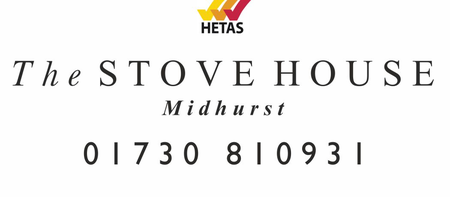I have had several people asking me to remind them about the difference between wood and multi-fuel so I'm just going to run over it again so you can get the best from your stoves.
First: How to identify the stove you have.

NOTE: PLEASE BE AWARE THAT SOME STOVES HAVE ONE OR MORE AIR VENTS AND MAY LOOK SLIGHTLY DIFFERENT TO THESE PICTURES BUT THE MAIN THING IS TO SEE IF IT HAS A GREAT.
Wood Burning Only Stoves:
Also called wood-fuel stoves, log burners, they solely run on wood logs, generally, as a rule, they have a solid base inside with no ash pan.
Wood burns best on a bed of ash and it is therefore only necessary to remove surplus ash from on top of the grate occasionally. Burn only dry, well-seasoned wood, which should have been cut, split and stacked for at least 12 months, with free air movement around the sides of the stack to enable it to dry out. Get in the habit of bringing in a stack so it can dry out inside in a log basket or log store. Or you could buy kiln dried logs conveniently bagged, easy to carry and store.
Burning wet green wood or unseasoned wood will create tar deposits in the stove and the chimney and will not produce a satisfactory heat output. You can read our guide on: Which wood burns best, how to stack it, where to buy it and why not use wet wood here.
Never burn solid mineral fuels on a woodburning only stove. Never burn solid mineral fuels on a woodburning only stove, why? You need a raised grate for coal and if you were to burn coal on a woodburner you will void your guarantee and could seriously damage your wood stove. Depending on your stove make and model you usually find that there are different settings for each fuel and this will affect the performance of the stove, the glass staying clean and the tertiary burn working effectively. If you are finding your a is not working, you are burning your wood too quickly or your fire keeps going out, you are burning it incorrectly.
Multi-Fuel Stoves:
Multi-fuel stoves are also called mineral-fuel stoves. They can burn wood, smokeless fuel and coal. They are differences in the way these fuels burn, and not all multi-fuel stoves are optimised for burning all compatible fuels with equal efficiency.
Coal needs air to reach it from below. Multi-fuel stoves have a grate for the fuel to sit on, making them ideal for coal. Some also have a riddling plate that allows you to remove any ash that's built up, letting more air through from underneath.
'Multi-Fuel’ does not mean you can burn ‘solid mineral’ fuel and wood together. In fact, this can damage your stove and will not allow the fire to perform correctly. It means the stove is designed to burn both fuels but separately not mixed. Solid mineral fuel burns without an ash bed therefore always de-ash before refuelling and do not let the ash level reach the underside of the grate bars. Solid mineral fuel produces ash, which if allowed to build-up will eventually cause the fire to die. With some solid mineral fuels, a residue of burnt fuel or clinker will accumulate on the grate, allow the fire to go out periodically to remove this.
Never burn solid mineral fuels on a woodburning only stove, why? You need a raised grate for coal and if you were to burn coal on a woodburner you will void your guarantee and could seriously damage your wood stove. Depending on your stove make and model you usually find that there are different settings for each fuel and this will affect the performance of the stove, the glass staying clean and the tertiary burn working effectively. If you are finding your airwash is not working, you are burning your wood too quickly or your fire keeps going out, you are burning it incorrectly.







